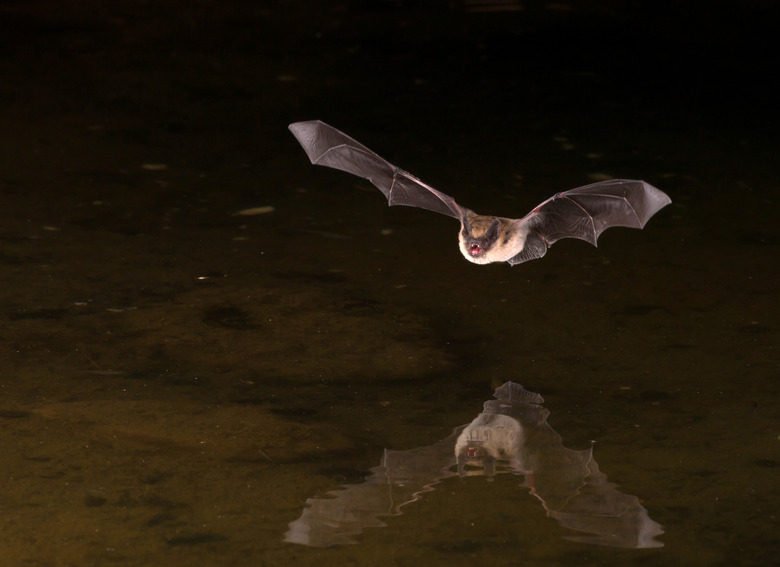Vampire Bat Life Cycle
The bat order, Chiroptera, splits bats into Megachiroptera (megabats) and Microchiroptera (microbats). In the wild, common vampire bats are microbats that live about nine years. In captivity they can live more than 20 years. The common vampire bat, Desmodus rotundus, is the most well-known and intriguing in its genus.
Habitat
Habitat
Although vampire bats traditionally live in caves, they also flourish in hollowed-out trees, abandoned building and mine shafts. All of these environments support constant temperatures and a high level of humidity—just what vampire bats like. Bats live in transient groups of 20 to 100, but some groups can get as large as 5,000.
Females organize the habitat of the groups. Mostly, groups remain together when they move, but females might switch groups every couple of years.
Mating
Mating
Male bats protect their roosting area aggressively. They compete for spaces near females. Vampire bats are sexually mature at about 40 weeks of age. To mate, a male climbs onto a female's back, grasps her folded wings with his wings, and holds the back of her neck in his mouth, according to the University of Michigan Museum of Zoology. They copulate for three to four minutes.
Birth
Birth
Bats do not lay eggs; they generally carry one pup at a time. They remain pregnant for about seven months. Because mating happens year-round, births do as well. However, the majority of births occur just before and after summertime (April to May and October to November). Each female maintains a fairly constant reproductive cycle, usually birthing one pup every 10 months.
Gestation and Newborns
Gestation and Newborns
Newborn bats, while fully formed, cannot hunt. Like other mammals, the offspring drink milk just after birth. During the second month of life, mothers begin feeding blood to the young. Vampire bats cannot survive without blood, so they instinctively regurgitate and share blood. Newborns weigh 0.2 to 0.3 of an ounce, but that weight doubles in the first month. At four months, juvenile bats begin hunting with their mothers.
Adult
Adult
From nose to rear end, adult bats measure about 3 inches and weigh anywhere from half an ounce to 1.75 ounces. Several features distinguish vampire bats from other bats. They have 20 teeth with two sharp incisors, just like vampire fangs. This bat does not have a tail. Its dark gray back fades to a much paler stomach.
Foraging Techniques
Foraging Techniques
Vampire bats can do more than just fly. They have the ability to walk and hop, which is useful for initiating flight. Vampire bats usually fly about 3 feet off the ground.
Eating Habits
Eating Habits
Vampire bats feed primarily on blood, usually from horses and cows. If forced to fast, a vampire bat's blood glucose will fall, and the bat is likely to die. Without blood, a vampire bat will starve to death in 60 hours.
Cite This Article
MLA
Griffin, Dana. "Vampire Bat Life Cycle" sciencing.com, https://www.sciencing.com/vampire-bat-life-cycle-6550429/. 22 November 2019.
APA
Griffin, Dana. (2019, November 22). Vampire Bat Life Cycle. sciencing.com. Retrieved from https://www.sciencing.com/vampire-bat-life-cycle-6550429/
Chicago
Griffin, Dana. Vampire Bat Life Cycle last modified March 24, 2022. https://www.sciencing.com/vampire-bat-life-cycle-6550429/
